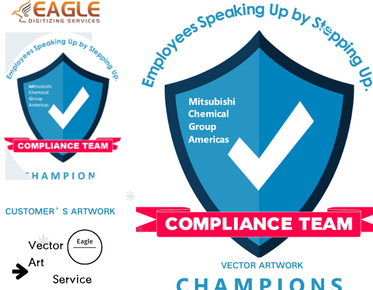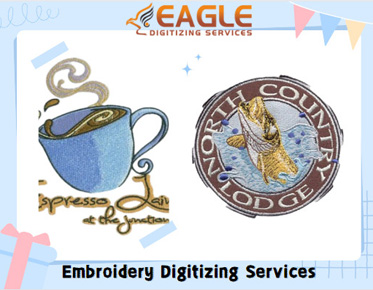Keep It Fresh: How Do I Clean, Store, and Maintain Printing Supplies?
Screen printing, an age-old technique that merges artistry with craftsmanship, allows creators to transfer designs onto various surfaces using ink and a mesh screen. However, to achieve high-quality prints consistently, understanding how to clean, store, and maintain your screen printing materials is paramount. This article will guide you through the essential practices that ensure your tools remain in peak condition, helping you produce vibrant prints time and again. If this post has aroused your curiosity about vector conversion and you hope to gain more knowledge, reach out to us without hesitation.
The Essential Tools and Materials You’ll Need
To embark on your screen printing journey, you’ll need a handful of essential tools. A sturdy screen, typically made of mesh fabric, forms the basis of your setup. You'll also require a squeegee to push ink through the screen, along with high-quality inks specifically designed for screen printing. Other vital materials include emulsion for creating stencils, a drying rack, and, of course, a clean workspace. Each item plays a crucial role in the printing process, and understanding their functions will elevate your craft.
Cleaning Your Screen Printing Equipment
Why Regular Cleaning is Crucial for Quality Prints
Maintaining cleanliness in your screen printing setup is not just about aesthetics; it directly impacts the quality of your prints. Residual ink, emulsions, or dust particles can lead to unwanted blemishes, blurring, or misalignment in your designs. Regular cleaning helps preserve the integrity of your materials, extending their lifespan while ensuring each print emerges flawless and vibrant.
Step-by-Step Guide to Cleaning Screens After Use
1. Immediate Rinse: As soon as you're done printing, rinse the screen with water to remove excess ink. Use a gentle spray to avoid damaging the mesh.
2. Apply Cleaner: Use a specialized screen cleaning solution or a mild detergent to break down any remaining ink. Spray generously and allow it to sit for a few minutes.
3. Scrub Carefully: Employ a soft-bristle brush to scrub the screen gently, working in circular motions to dislodge any stubborn ink.
4. Final Rinse: Rinse the screen thoroughly with water until all cleaning solutions and ink residue are removed.
5. Drying: Lay the screen flat or hang it up to dry completely, ensuring it is stored in a dust-free environment.
Removing Ink from Screens
Best Practices for Ink Removal Techniques
When dealing with screen printing ink, adopting best practices for removal can save you time and frustration. Always tackle ink while it’s still wet; dried ink is significantly harder to remove and can damage the screen. For stubborn stains, a dedicated screen ink remover can work wonders, but avoid excessive scrubbing, which may compromise the mesh.
Choosing the Right Solvents and Cleaners
Selecting appropriate solvents is crucial. Opt for eco-friendly, biodegradable cleaners whenever possible to protect the environment while ensuring effective cleaning. Alcohol-based solvents can be effective for certain inks, while water-based cleaners are gentle on your materials and surfaces. Always check the manufacturer’s recommendations to avoid using harsh chemicals that might damage your screens.
Cleaning Squeegees and Other Tools
How to Properly Clean and Maintain Your Squeegees
Your squeegee is an unsung hero in the screen printing process, so keeping it in optimal condition is vital. After each use, rinse the blade with water immediately to prevent ink from drying. Use a soft cloth to wipe it down and avoid abrasive materials that could scratch the surface. Store your squeegees upright to prevent bending or warping, which can affect print quality.
Tips for Keeping Your Flood Bars and Brayers in Shape
Flood bars and brayers, like squeegees, require regular cleaning to maintain their effectiveness. After use, wipe them down with a damp cloth to remove excess ink. For stubborn residues, a gentle scrubbing with a soft brush and cleaning solution can help. Store these tools in a designated area, avoiding places where they may be crushed or damaged.
Caring for Your Screens
How to Store and Handle Screens to Prevent Damage
Screen storage is an art in itself. Always handle screens by the frame to avoid stretching or damaging the mesh. When storing, lay screens flat in a clean, dry place away from direct sunlight, which can degrade the emulsion over time. Consider using protective covers to shield your screens from dust and accidental damage.
Techniques for Removing Emulsion Safely
To remove the emulsion, apply a suitable emulsion remover according to the product's instructions. Allow the remover to penetrate the emulsion for a few minutes before rinsing. A gentle scrubbing with a soft brush can help dislodge any stubborn residue. Remember, patience is key; rushing through this process can lead to screen damage.
Cleaning the Press and Work Area
Maintaining a Tidy Workspace for Better Results
A clutter-free workspace is essential for successful screen printing. Make it a habit to clean up spills immediately and regularly organize your materials. Not only does this create a more pleasant working environment, but it also minimizes distractions, allowing you to focus on the art of printing.
How to Clean Your Screen Printing Press Efficiently
Cleaning your press involves a few straightforward steps. Start by removing any ink residue from the platens and frames using a damp cloth. For stubborn ink, a dedicated press cleaner can be used. Ensure all parts are dried thoroughly to prevent rust and degradation before reassembling the press for future use.
Storing Screen Printing Materials
The Best Practices for Storing Screens
Proper storage of screens is vital for maintaining their usability. Store them flat, as previously mentioned, and in a cool, dry environment. Avoid stacking them without protection, as this can lead to warping or mesh damage.
How to Properly Store Inks and Emulsions
Inks and emulsions should be stored in tightly sealed containers to prevent drying out or contamination. Keep them in a cool, dark place away from direct sunlight and extreme temperatures, as both can affect their performance. Regularly check for any signs of spoilage or separation and dispose of any unusable materials responsibly.
Organizing Your Printing Supplies
Creating a System for Easy Access to Your Materials
Organization is the cornerstone of an efficient printing operation. Establish a system for categorizing supplies—inks, screens, tools, and cleaning materials should each have designated storage. Consider using shelving units or storage bins to keep everything accessible yet neatly stored.
Tips for Labeling and Categorizing Your Supplies
Labeling your supplies can significantly enhance your workflow. Use clear, concise labels that indicate content and, if applicable, color or type. A well-organized supply area minimizes the time spent searching for materials, allowing for a smoother printing process.
Maintaining Your Inks
How to Keep Your Inks Fresh and Usable
Inks require special care to remain usable. Always seal containers tightly after use to prevent drying. Periodically check for consistency; if you notice any separation, gently stir the ink until it returns to a uniform texture.
Identifying When It’s Time to Replace Old Inks
Old inks may lose vibrancy and effectiveness over time. Signs of aging include thickening, unusual odors, or a color change. If you’re experiencing difficulties achieving the desired results, it may be time to replace those older inks with fresh supplies.
Preserving Emulsions and Films
How to Store Emulsions to Extend Their Shelf Life
Emulsions are delicate and require specific storage conditions to prolong their shelf life. Keep them in a cool, dark place, ideally within their original containers. Avoid exposing them to extreme temperatures, and always check expiration dates before use.
Best Practices for Film Storage and Handling
Films, too, should be stored carefully. Keep them flat, away from moisture and direct sunlight. Use protective sleeves or boxes to prevent scratches or creases, which can affect their performance when creating stencils.
Understanding the Shelf Life of Materials
The Importance of Knowing Expiration Dates
Familiarizing yourself with the expiration dates of your materials is crucial. Expired inks, emulsions, and films can compromise your printing quality and lead to waste. Regularly review your supplies and make it a habit to rotate stock, ensuring that older items are used first.
How to Rotate Stock for Optimal Use
A simple method for stock rotation is the FIFO (First In, First Out) system. Place newer materials behind older ones, ensuring that you use the older supplies before they expire. This practice not only maximizes the use of your materials but also minimizes waste. For the premier online vector artwork conversion, feel free to connect with us.
Routine Maintenance for Equipment Longevity
Creating a Regular Maintenance Schedule
Establishing a maintenance schedule is key to prolonging the life of your equipment. Set aside specific days for deep cleaning and routine checks, creating a calendar that highlights tasks to complete each week or month.
What to Inspect During Routine Checks
During inspections, pay close attention to components such as screens, squeegees, and the press itself. Look for wear and tear, rust, or any signs of malfunction. Early detection of issues can prevent costly repairs or replacements down the line.
Dealing with Common Issues
Troubleshooting Problems Caused by Poor Maintenance
Many common screen printing issues stem from neglecting maintenance. Poor print quality, misalignment, or clogs can often be traced back to unclean tools or improperly stored materials. Regularly assessing your equipment can help nip these problems in the bud.
How to Fix Screen Printing Mistakes Before They Happen
Preventative measures are invaluable. Always conduct test prints before running a full batch, which allows you to catch any potential issues early. Furthermore, keeping your workspace organized and tools clean will significantly reduce the likelihood of mistakes.
Investing in Quality Materials
Why Quality Tools Matter in Screen Printing
Investing in quality materials is a hallmark of successful screen printing. Higher-quality screens, inks, and tools not only enhance your print results but also improve your workflow. They tend to be more durable, requiring less frequent replacements and minimizing overall costs in the long run.
Recommended Brands for Reliable Equipment
While individual preferences may vary, several brands consistently deliver reliable screen printing equipment. Brands like Speedball, Ryonet, and M&R are known for their durable and effective products. Research and choose tools that align with your specific needs and printing goals.
Eco-Friendly Cleaning Solutions
Natural Alternatives for Cleaning Screen Printing Tools
As sustainability becomes increasingly vital, many screen printers are turning to eco-friendly cleaning solutions. Options such as vinegar, baking soda, and biodegradable soaps can effectively clean your tools without harsh chemicals, protecting both your health and the environment.
The Benefits of Using Green Products
Using green cleaning products not only minimizes your ecological footprint but also contributes to a healthier workspace. Many traditional cleaners can release harmful fumes, while eco-friendly alternatives are typically non-toxic, making them safer for you and your surroundings.
Maintaining your screen printing materials is the bedrock of achieving high-quality results. By investing time in regular cleaning, proper storage, and routine maintenance, you cultivate an environment conducive to creativity and productivity. Developing good habits not only ensures the longevity of your equipment but also fosters a successful screen printing journey. Embrace these practices, and watch your artistic endeavors flourish!



